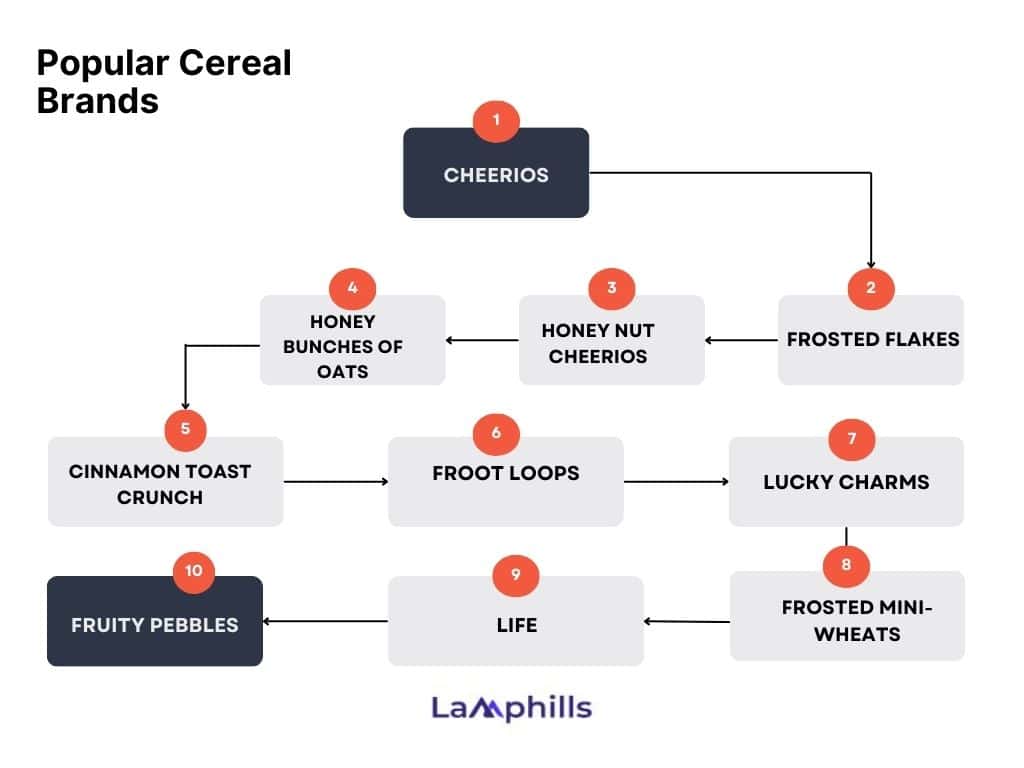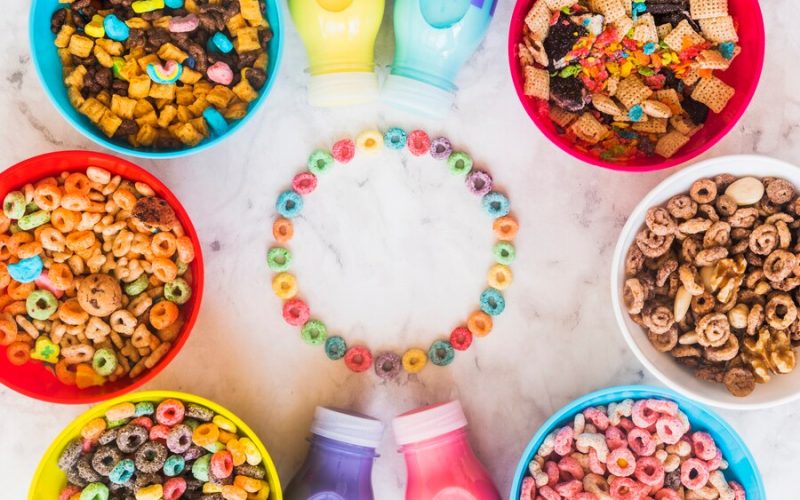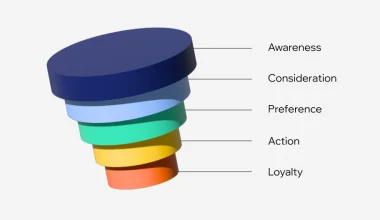Breakfast is frequently seen as the most essential meal of the day, and cereal is a popular choice for many people. Whether you prefer traditional cornflakes or something with a bit of extra crunch, cereal brands have been a home staple for decades. In this blog post, I’ll talk about some of the most popular cereal brands, explore their unique offerings, and discuss the factors that contribute to their success.
Cereal, as we know it today, has an interesting history. The cereal was invented in the late nineteenth century when health enthusiasts were looking for easy-to-digest breakfast options. Fast forward to now, and the cereal section at any grocery shop is a vibrant display of options, each offering a distinct taste experience.
According to Statista, the worldwide breakfast cereal industry was valued at $37.8 billion in 2020 and is predicted to continue to expand. This development is driven not only by an increase in cereal consumption but also by the innovation and nostalgia that these brands bring to the table.
Key Takeaways
- Cereal has been a breakfast staple since its invention in the late 19th century, originally designed as an easy-to-digest option. Today, it remains popular worldwide, with the industry valued at $37.8 billion in 2020, driven by innovation and nostalgia.
- Popular cereal brands such as Cheerios, Frosted Flakes, Honey Nut Cheerios, and Cinnamon Toast Crunch have become household names, each with unique offerings and significant sales figures, demonstrating their lasting appeal.
- Brands like Kellogg’s and General Mills have effectively used iconic mascots such as Tony the Tiger and Buzz Bee to build brand recognition and loyalty, contributing to their long-term success.
- As consumers become more health-conscious, there’s a growing demand for cereals with added nutrients, reduced sugar content, or whole grains.
- The cereal industry is expected to continue evolving with new flavors, textures, and ingredients, emphasizing sustainability and ethical sourcing to meet changing consumer demands.
Popular Cereal Brands

There are many popular cereal brands on the market, but some stand out more than others. Below are a few of the most popular cereal brands:
#1. Cheerios
- Parent Company: General Mills
- Boxes Sold: 139.1 million
- Annual Sales: $435.9 million
Cheerios initially appeared in cereal bowls in 1941, under the name CheeriOats. The company’s products are sold under many labels around the world. In the United States, they are part of General Mills’ product selection. CheeriOats’ name was reduced to Cheerios in 1945, and the oat cereal quickly gained popularity.
It wasn’t until 1976 that they attempted a new flavor for their oats, Cinnamon Nut Cheerios, but that wasn’t their biggest hit; it was the following flavor they tested that customers loved: Honey Nut Cheerios. Honey Nut Cheerios are a tremendous popularity. In fact, they are the second most popular cereal brand in the United States.
#2. Frosted Flakes
- Parent Company: Kellogg’s
- Boxes Sold: 132.3 million
- Annual Sales: $412.6 million
Frosted Flakes are sugar-coated cornflakes. The cereal first hit the market in 1952, under the name Sugar Frosted Flakes. Apparently, they intended to emphasize the fact that they were sugar-coated.
Obviously, as people became increasingly concerned about calories and sugar in their foods, the firm wanted to downplay the quantity of sugar they used; therefore, the term sugar was removed from the name in 1983.
But what’s in a name? Actually, it makes little difference to Frosted Flakes. The name is so general that it cannot be patented, thus you’ll see competitors using it too.
How do you know it’s the original Frosted Flakes? Of course, checking for Kellogg’s logo might be helpful, but your main clue with be Tony the Tiger. Tony has been with the cereal since its inception and has become an icon.
#3. Honey Nut Cheerios
- Parent Company: General Mills
- Boxes Sold: 129.3 million
- Annual Sales: $421.7 million
As previously stated, Honey Nut Cheerios was Cheerios’ second taste, following Cinnamon Nut. They were released in 1979 and sold approximately 1.8 million cases during that year. These Cheerios are sweeter than the original and contain honey and almond taste. Initially, genuine nuts were used for the almond flavor, but in 2006, they switched to flavors derived from peach and apricot pits.
Buzz Bee, a cheery cartoon bee, has long served as the cereal’s mascot, but General Mills is concerned with more than just the mascot bee. They’ve been involved in bee conservation and awareness since 2011.
#4. Honey Bunches of Oats
- Parent Company: Post Consumer Brands
- Boxes Sold: 111.3 million
- Annual Sales: $375.2 million
Honey Bunches of Oats was discovered by a Post employee, Vernon Herzing. He took several Post cereals and mixed them together, letting his daughter try each one. The initial version was made available in 1989 and consists of three kinds of flakes and oat clusters baked with a small amount of honey.
Apparently, Herzing’s kid is quite skilled at picking cereals because this has been a big success for Post. There have also been many different varieties, some of which are still available, while others have been discontinued, but the original is still a popular choice in the United States.
#5. Cinnamon Toast Crunch
- Parent Company: General Mills
- Boxes Sold: 105.2 million
- Annual Sales: $344.3 million
Cinnamon Toast Crunch is a global favorite, although it goes by several names in different countries. In the United States, this cereal debuted in 1984. Obviously intended to taste like cinnamon toast, the little pieces of wheat and rice are coated with delightful cinnamon and sugar.
The brand has developed various versions with varied flavors, such as Dulce de Lech and French Toast Crunch. They’ve also gone a step further and come up with more products that feature their cinnamon toast flavor, including snack mixes, crunch treat bars, and even Cinnadust seasoning blend.
#6. Froot Loops
- Parent Company: Kellogg’s
- Boxes Sold: 91.7 million
- Annual Sales: $269.1 million
Froot Loops debuted in 1963, with little circles fashioned like Cheerios but colored red, yellow, and orange. The extra blue, purple, and green colors did not appear until the 1990s. While you’d believe that each color signified a flavor, they all taste the same. There’s no genuine fruit in these loops, but they do have a fruity flavor.
Froot Loops is another brand that understands its target audience; they also have a charming cartoon mascot that has become an icon for Toucan Sam’s brand. The toucan has been connected with the cereal from the initial marketing campaign; the colors of his bill are intended to coincide with the cereal’s colors.
Toucan Sam’s nose is red, orange, and yellow, which are the same colors as the original cereal. Well, that is till 2020. In 2020, Kellogg’s chose to modernize Toucan Sam by making him brighter, his nose nearly psychedelic in an attempt to depict more colors, and his eyes anime-like.
#7. Lucky Charms
- Parent Company: General Mills
- Boxes Sold: 86.4 million
- Annual Sales: $283.4 million
Lucky Charms was founded in 1964 when several General Mills employees were tasked with developing a new product based on their current cereals, Cheerios or Wheaties. After a trip to the grocery store, one employee became inspired and decided to mix Cheerios with small bits of circus peanuts. This little bit of genius made General Mills the first company to include marshmallows in cereal.
Even the little marshmallow bits, known as “marbits,” have an interesting provenance, as they are created from milk solids and have their own patent. Interestingly, the company realized that changing out the marshmallows regularly increased sales.
This is why you may have realized that your favorite yellow moons or blue diamonds have disappeared. Over time, they have been replaced with a variety of shapes and colors. As of April 2021, the charms have been given “powers,” which are intended to be permanent. Only time will tell.
Lucky the Leprechaun, sometimes known as Sir Charms, has been around for the same amount of time as the cereal, except for New England, where the Leprechaun was briefly replaced by Waldo the Wizard in 1975, but Lucky has returned.
#8. Frosted Mini-Wheats
- Parent Company: Kellogg’s
- Boxes sold: 71.3 million
- Annual Sales: $241.9 million
Frosted Mini-Wheats first appeared in the United States in 1969, but they were not the cereal you see on store shelves today. The original cereal, which consisted of frosted shredded wheat particles, was significantly larger.
It wasn’t until 1980 that a bite-sized mini-wheat was developed, prompting them to rename the originals as the Big Bite in 2001, and by 2015, they had discontinued that size entirely.
Because Frosted Mini-Wheats does not rely on its sugary and frosted component to appeal to children, they have never produced a genuinely famous marketing figure. The company alternates between trying to appeal to children, or at least parents, and appealing to adults. The brand definitely promotes its “healthy” fiber content.
#9. Life
- Parent Company: Quaker Oats Company
- Boxes Sold: 58.1 million
- Annual Sales: $177.5 million
Life cereal was introduced in 1961 and was manufactured by the Quaker Oats Company. It was initially manufactured from oats. However, oats are no longer included in the equation, although they can be found in Life Original Multigrain Cereal, the original Life variation.
Most people know Life for the 1970s advertisements with Little Mikey. This kid, who despises everything except allegedly Life cereal, appeared in the ad campaign from 1972 to 1986, making it one of the longest-running television commercials in history. The ad also won awards, was extremely well received, and is routinely ranked among the most memorable ads of all time. It has generated a few remakes and numerous spoofs.
There have been many different flavors of Life throughout the years, most of which were short-lived, but Cinnamon Life, which debuted in 1978, is still a popular choice among customers.
#10. Fruity Pebbles
- Parent Company: Post Consumer Brands.
- Boxes Sold: 54.1 million.
- Annual Sales: $172.3 million.
Fruity Pebbles originated as a cereal called Sugar Rice Krinkles, however, the cereal was not particularly popular. In order to increase sales, they post-licensed the popular TV show and characters from The Flintstones for their cereal. While characters were frequently used to market cereal, this was the first time a complete cereal would be branded around characters, raising concerns that this strategy would be short-lived.
The relaunched cereal was supposed to be called Flint Chips and Rubble Stones, but both names were dropped in favor of the present Cocoa Pebbles and Fruity Pebbles, which were brought to the market in 1971.
The initial “mascots” were, of course, characters from The Flintstones, and they remain the mascots today. These two cereal brands are the earliest to still exist and are based on TV or movie characters. This dispels any concerns about a limited lifespan.
Kellogg Brand Cereal
Kellogg’s is one of the most popular cereal brands in the world. Kellogg’s, founded in 1906, has been a cereal market leader for more than a century. The company provides a wide range of cereals, including:
- Corn Flakes: This iconic cereal has been eaten for generations.
- Frosted Flakes: A sugary cereal with a frosted coating.
- Special K: A nutritious cereal high in protein.
- Pop-Tarts: A toaster pastry available in a variety of flavors.
- Raisin Bran: A whole grain cereal with raisins.
Kellogg’s has thrived because of its ability to adapt to shifting consumer preferences. For example, as consumers became more health-conscious, Kellogg’s produced healthier alternatives such as Special K and Kashi. The company has been successful in promoting its cereals, employing iconic mascots like Tony the Tiger and Toucan Sam to appeal to kids.
The cereal industry is always developing. As people become more health conscious, there is an increasing desire for better cereal options. Furthermore, there is a trend toward individualized nutrition, with customers looking for cereals that fit their specific nutritional needs.
In the future, we should expect even more innovation in the cereal business. New flavors, textures, and ingredients will continue to be introduced, with a greater emphasis on sustainability and ethical sourcing.
“Our cereal quiz will help you find the best popular cereal brands for your taste preferences. Take it now and unlock the secrets to the perfect breakfast.”
How many different cereal brands are there?
Currently, there are over 1,000 varieties of breakfast cereals around the globe.
What are the five names of cereals?
Cornflakes, muesli, oats or oat porridge, granola, rice krispies, wheat flakes, and bran cereal are some of the most popular morning cereals.
Conclusion
Cereal is a popular breakfast option for millions of people, from nostalgic childhood flavors to health-conscious options today. Kellogg’s, General Mills, and Post Consumer Brands have become household names, with an extensive selection of cereals to suit every taste and nutritional need. Whether you enjoy old Kellogg’s cereal or prefer something more modern, there’s a cereal for you.
Take time to reflect on your fondest cereal experiences when you walk down the cereal aisle during your next shopping trip. What is the one cereal that always makes you smile? Share your opinions in the comments—let’s continue the conversation about the cereals that have shaped our breakfast over the years.
Related Articles
- Branding vs. Packaging: Key Strategies for Standing Out in Nigeria’s Market
- 20 Examples of Successful Companies With Brand Values to Inspire You
- Unlocking the Power of Brand Equity: A Comprehensive Guide
- What Are the Best Fridge Brands in Nigeria? 2024 Ranking






